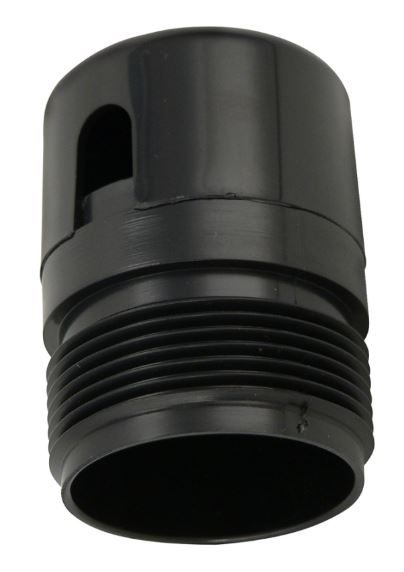Air Admittance Valves (AAV) and Air Check Valves


There probably is not a week that goes by where we don’t see a “cheater valve” used on a plumbing fixture. What do you tell your clients? Some inspectors say they are illegal, others say they are not “code”, still others say, they are fine, because that is the only way to vent a fixture far from the main stack. Actually all of those statements can be correct. First we need to know the difference between an air admittance valve (AAV) and a “cheater vent”. An air admittance valve (pictured in white) opens when negative air pressure is detected and allows air into the vent stack. When the negative pressure is gone it then closes to prevent sewer gases from entering the area. A check valve or “cheater” valve are spring operated and open by suction to allow air into the system. Sewer gas may escape. The spring in the check valve may fail. If this happens, it will remain closed and allow negative pressure to siphon the drains allowing sewer gases to enter at the fixture drains. Check valves (pictured in black) are only allowed in mobile homes.
The 2015 International Plumbing Code specifically addresses AAV’s in section 918. Section 918.3 states in part; “Individual branch and circuit vents shall be permitted to terminate with a connection to an individual or branch-type air admittance valve in accordance with Section 918.3.1. Stack vents and vent stacks shall be permitted to terminate to stack-type air admittance valves in accordance with Section 918.3.2.”
Basically Section 918.3.1 states that individual and branch-type AAV’s shall vent only fixtures on the same floor level, and connect to a horizontal branch drain. Where the horizontal branch is located more than 4 branch intervals from the top of the stack, the horizontal branch shall be provided with a relief vent that shall connect to a vent stack or stack vent, or extend outdoors to the open air. The relief vent shall connect to the horizontal branch drain between the stack and the most downstream fixture drain connected to the horizontal branch drain. Section 918.3.2 states; “Stack-type air admittance valves shall be prohibited from serving as the vent terminal for vent stacks or stack vents that serve drainage stacks having more that six branch intervals.” (A vent stack is a vertical pipe that runs parallel to the waste stack, to which all the vents are connected. The stack vent is the final portion of the waste / soil stack above the highest fixture and normally terminating outside). So what should a home inspector be looking for?
- An AAV cannot be used for sumps and sewage ejector systems
- AAV will have a UPC symbol on it / check valves do not
- AAV should be accessible and in adequate air space
- The size of the AAV shall be rated properly for the size pipe it is venting
- Section 918.7 states; “Within each plumbing system, not less than one stack vent or vent stack shall extend outdoors to open air
- AAV should not be installed in supply or return ducts
- AAV shall be located a minimum of 4 inches above the horizontal branch drain or fixture drain being vented.
- Stack type AAV shall be located not less that 6 inches above the flood level rim of the highest fixture being vented
- The AAV shall be located within the maximum developed length permitted for the vent.
- The AAV shall be installed not less than 6 inches above insulation materials
- Within each plumbing system, not less than one stack vent or vent stack shall extend to the outdoors
- AAV should be installed no more than 15 degrees of vertical
- AAV’s should not be exposed to the elements
- Check or cheater valves are only permitted in mobile homes
Related Articles:
- Inspecting Direct Vent Water Heaters
- PEX Problems
- Hot Water Tank Requirements After April 2015
- Inspecting DWV Saddle Fittings
Want To Learn More? Click HERE to Search Our Full Database Of Home Inspector Newsletters.



